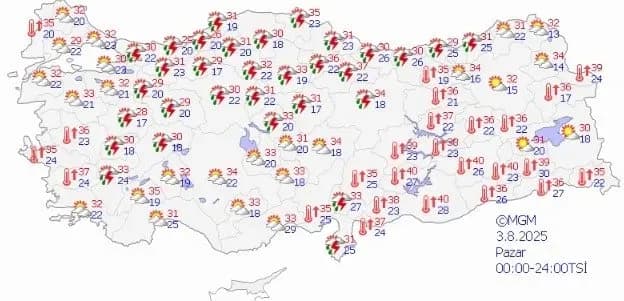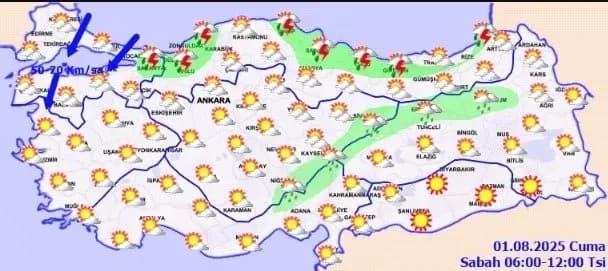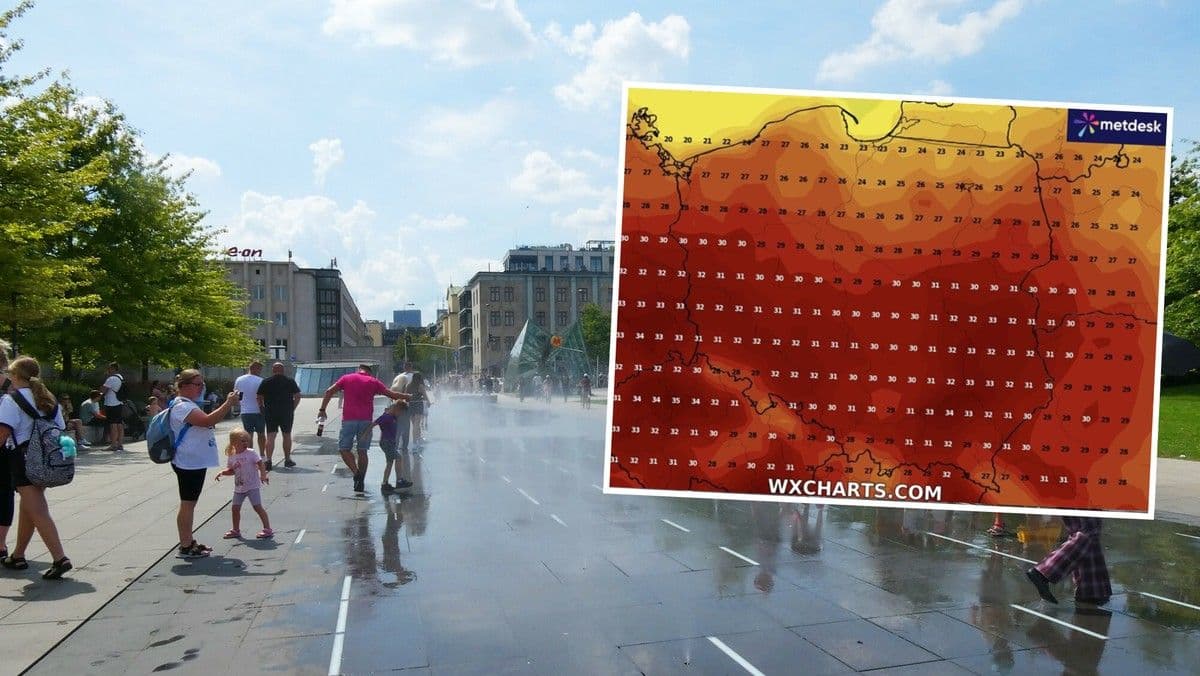The Summer Turnaround: Decoding Turkey's Radical Weather Shift
Dive into Turkey's dramatic weather shift: from record heat to widespread rain. Uncover forecasts, warnings, and how regions like Istanbul are adapting to volatile summer skies.

From Blistering Peaks to Brewing Clouds: A Meteorological Recap
The scorching grip of summer across is finally showing signs of loosening, at least for some regions, as a significant meteorological shift takes hold. For weeks, vast swathes of the country, particularly the southeastern provinces, have endured relentless, searing heat, with temperatures consistently soaring above the 40-degree Celsius mark. This oppressive heatwave has tested endurance and strained resources, leaving many longing for a respite.
However, as the weekend of August 2nd-3rd, 2025, dawned, a dramatic change began to sweep across the nation. The had signaled this pivot, predicting a noticeable drop in temperatures for the northern, central, and western parts of the country. Saturday marked the initial phase of this transformation, as skies over these regions turned partly cloudy, bringing with them the promise, and indeed the arrival, of scattered thunderstorms and showers. Major cities like saw their mercury drop to a more tolerable 31-21 degrees Celsius, while experienced a refreshing dip to 30-19 degrees. This marked a stark contrast to the preceding days, offering a much-needed breath of fresh air for millions.

The Great Deluge Arrives: Regional Forecasts and Key City Impacts
Following Saturday's initial cool-down, Sunday, August 3rd, saw the rainy weather consolidate its presence, particularly intensifying across the Inner Anatolia and Black Sea regions. While not a universal drenching, these areas experienced persistent showers, signaling a clear departure from the dry, hot conditions that had dominated. Temperatures continued their downward trend from Saturday's figures, further solidifying the sense of a genuine summer turnaround. , for instance, hovered around 30-20 degrees Celsius, and saw temperatures settle at 29-19 degrees, making outdoor activities considerably more comfortable for weekenders.
However, the meteorological narrative across remains one of stark contrasts. While the west, north, and central parts embraced the cooler, wetter conditions, the southeastern provinces continued to bake under intense heat, with temperatures stubbornly remaining above 40 degrees Celsius. This regional disparity highlights the complex nature of Turkey's climate, where relief for some means continued vigilance for others. Cities like , for example, largely bypassed the rainfall, maintaining high temperatures in the 34-36 degree range. This patchwork of weather patterns underscores the importance of localized forecasts for residents and visitors alike, as the "great deluge" was truly a regional affair.

Beyond Raindrops: Understanding Associated Wind and Hail Warnings
The arrival of rain, while welcome for its cooling effect, often brings with it other atmospheric phenomena that demand attention. Beyond the soothing sound of raindrops, the issued stern warnings regarding strong winds accompanying the shifting weather patterns. Specifically, coastal areas of Marmara and the Northern Aegean, along with the interior parts of Western and Central Black Sea regions and the northeastern sections of Inner Anatolia, were put on alert for winds gusting between 40 and 70 kilometers per hour. Such speeds can pose significant risks, from disrupting daily commutes to causing structural damage or affecting maritime activities.
Moreover, the mention of "thunderstorm showers" for various regions, particularly over the weekend and into early Monday for areas like central Inner Anatolia, implies a heightened risk of associated hazards. While explicit hail warnings weren't universally declared for all affected areas in the provided forecast, the very nature of strong thunderstorms in summer often includes the potential for localized hail formation. Residents in these thunderstorm-prone zones were urged to exercise caution, recognizing that sudden, intense downpours combined with strong winds and possible hail can create hazardous conditions, requiring vigilance against potential flash floods or damage from falling debris.

The Aftermath and Ahead: Post-Rain Outlook and Temperature Rebound
As the initial wave of weekend rainfall subsides, is poised for another phase in its dynamic summer weather narrative. The new week, kicking off on Monday, August 4th, sees a significant reduction in precipitation across most of the country. The western and southern regions, having experienced a brief but impactful cool-down, are expected to return to largely sunny skies. Only isolated, localized showers might linger in parts of the Black Sea and some interior areas, a mere whisper of the preceding weekend's downpours.
However, the relief from the widespread rain is accompanied by a swift upward trajectory in temperatures. Monday will see reach a high of 34 degrees Celsius, with climbing to 31 degrees. This warming trend is set to accelerate into Tuesday, August 5th, with forecast to hit 35 degrees and reaching 34 degrees. The message is clear: the rainy interlude was just that – a temporary break. By mid-week, particularly on Wednesday, August 6th, the country is expected to be largely bathed in sunshine, with temperatures continuing their ascent. The oppressive heat, especially in the southeastern provinces where readings consistently top 40 degrees, never truly left and will once again become the dominant weather story for many.

Navigating Volatile Skies: Adapting to Summer's Unpredictable Temperament
The rapid swing from blistering heat to widespread rain, followed by a quick return to high temperatures, serves as a stark reminder of summer's increasingly unpredictable temperament in . This volatility isn't just a matter of changing wardrobe choices; it poses significant challenges for urban planning, agriculture, and public health. Citizens are consistently reminded by meteorologists to remain vigilant against potential adverse conditions, whether it's the risk of sudden downpours, strong winds, or the persistent threat of extreme heat in regions like the Southeast, where temperatures routinely exceed 40 degrees Celsius.
Adapting to such a dynamic climate requires more than just checking the daily forecast. It necessitates a proactive approach to preparedness, from ensuring proper drainage in urban areas to implementing heat safety protocols for vulnerable populations. The localized nature of many weather events, as seen with showers persisting in the Black Sea or Eastern Anatolia while other regions bake, underscores the need for regional-specific strategies. As summer progresses, understanding these rapid shifts and building resilience against both heatwaves and sudden, intense rainfall will be crucial for navigating ever-changing skies.
Related Articles

When Azure Skies Roar: Unraveling Greece's Intense Summer Storms

When Azure Skies Roar: Unraveling Greece's Intense Summer Storms

From Scorched Earth to Sky's Fury: Greece's Dramatic Weather Metamorphosis

From Scorched Earth to Sky's Fury: Greece's Dramatic Weather Metamorphosis

Poland's Fortnight of Flux: Navigating the Extreme Weather Swings

Poland's Fortnight of Flux: Navigating the Extreme Weather Swings

August's Fiery Blueprint: Decoding Romania's Enduring Summer Challenge
